One year ago, I wrote a blog predicting the developments in the Dutch energy world:
“Energy in 2015: the year of the end of the Energieakkoord and the breakthrough of thorium MSR”
(in Dutch)
So what happened?
The Energieakkoord (energy agreement, our energy policy framework) has not been officially abolished, but the parliament, in an outburst of Paris-COP21 fever, has decided to close down all our coal plants, even the two brand new ones that are extremely efficient and clean and that were deployed this year. While the core of the energieakkoord was the deal that Greenpeace and the rest of the green lobby got their €25 billion worth of wind turbines, while the electricity companies were allowed to keep their new coal plants.
Shutting down the coal plants after all, in essence killed the energieakkoord.
My second prediction was about the thorium MSR technology. I predicted that at the end of the year every energy expert who is part of the energy debate would know what thorium MSR is and would appreciate its advantages.
Well.. that was actually more like a promise than a prediction, because I did not exactly sit down and wait for things to happen…
But little could I have guessed what would really happen in 2015!
One year later we have a great community of thorium MSR enthousiasts, meeting on our LinkedIn group (please join us if you want to be kept informed!) and the developments on the thorium MSR field have been simply incredible.
I wrote a new years message to the thorium MSR community summing up the most important mile stones of last year, that I gladly share with you on this blog.
New Year message for the thorium MSR community
Best wishes to all of you!
2015 was a great year for thorium MSR, reaching two important milestones, that will be mentioned below. Our Dutch thorium MSR community can look back on a very good year:
– We had our very successful international conference in Delft (which is available entirely on video, see link below)
– The European SAMOFAR project, chaired by our expert Prof. Jan Leen Kloosterman, was granted by the EU and had a great start in Delft
– The Dutch parliament has twice asked the energy minister (Kamp) to assess the advantages of thorium energy, the second time in a motion that specifically requested an inquiry by our Delft experts, and the motion was supported by almost the entire parliament, excluding the Green Left movement. Most energy experts in the chamber are positive about thorium MSR, some even outspoken.
– At a meeting of energy experts organised by Cogen (Dutch combined heat-power generation organization) on November 28, Jeroen van der Veer, former Shell CEO and now chair of the New Energy Architecture working group of the World Economic Forum in Davos, came up with a very far-reaching statement: In their next report, they will designate thorium MSR as a disruptive technology for the energy supply, mainly because of the absence of long lasting nuclear waste. Large scale application was expected to be decades away, but still it was marked as disruptive.
Coming from such a high ranking expert team, this is a milestone in the recognition of thorium MSR. It means that from now on, big power industries would be wise to start preparing for a technology transition from fossil power generation to molten salt reactor technology.
– There was a lot of attention for thorium MSR in the mainstream press, and in almost all occasions in the Netherlands where there is discussion about a sustainable future, one of the speakers or someone in the audience comes up with thorium MSR
So it is clear that we managed to get thorium on the map with a positive, fresh, new and very sustainable image. I thank all of you for your efforts in this very successful campaign!
I consider it as a very important development that at the COP21 in Paris, four of the most prominent climate activist scientists (amongst them James Hansen, who was already featured in our symposium as a thorium MSR friend) made very strong statements to the joint press: substantial reduction of fossil fuel use is a myth, unless the world chooses for a very, very ambitious 4th generation nuclear program.
This assessment is supported by the fact that Google and Bill Gates announced that they had to stop their billion dollar projects for creating a sustainable world with solar and wind technology: it is just not feasible.
Gates now focuses a.o. on new nuclear technology, with attention to all options, including thorium MSR, and even LENR, but (as for now!) his nuclear team of Terrapower is working mainly on its own travelling wave reactor design.
Unique line-up after Delft symposium: all MSR start-ups of the world (except Thorcon Power):
Terrestrial Energy, Trans Atomic Power, DFR-IFK, Moltex, Copenhagen Atomics, Energy Process Developments, Flibe Energy
Since our symposium, I have stayed in contact with some of the visiting startups, and we see a steady focus on producing a first MSR within a decade by Terrestrial Energy and Thorcon Power. Thorcon recently announced its deal with the Indonesian government, which is the first real project to build thorium MSR reactors and is of course the second huge milestone for thorium MSR!
We also see that there is a lot of interest from the financial world. Financing a concrete MSR project seems no longer to be a problem.
As was already concluded at the symposium, the licensing is now the greatest threshold. No countries have regulation or would even know how to make regulation. Especially in the US attempts have been made to drastically speed up the process of 4th generation nuclear regulation and licensing. A great role in this is plaid by Leslie Dewan.
It recently appeared that President Obama is strongly supporting new nuclear, and is willing to take large steps in the licensing field.
In 2016 a Netherlands based thorium MSR foundation will be established that will coordinate all our efforts and will run an interactive web site with all available objective information, checked by experts, and provide a much less primitive platform for interaction than the poor attempt I did in this LinkedIn group.
The foundation will focus on providing top quality information, and on coordinating and stimulating all efforts to bring thorium MSR technology within reach as soon as possible.
An important part of this will be trying to get regulating processes started as soon as possible.
Please go on posting your comments on the Notification Board, or the Dutch Prikbord for matters that are only interesting to Dutch members, and put interesting links to information or press releases on the Informative Links and Video’s page and the Thorium in the Press page.
Feel free to use any language you want!
Check this notification board and the agenda for the announcement of our first activity this year, where you will be invited to meet us, and a spectacular mystery guest!
Later this year we will pay attention to the 1,5 hours ARTE documentary of Myriam Tonelotto about thorium MSR that will be broadcasted in almost all countries. This will be a boost for the image of thorium MSR and help it to be accepted as the breakthrough technology to focus on for our future energy supply
Let’s all continue our efforts, and turn 2016 into the Breakthrough Year of thorium MSR!
Theo Wolters
The video recording of all presentations of our symposium can be seen here in Collegerama format.
The numbers before the speakers correspond with the yellow dots on the timeline.
> 1. Tim van der Hagen
> 2. Jan Leen Kloosterman
> 3. Jilt Sietsma
> 4. Rudy Konings
> 5. Kirk Sorensen
> 6. Dave LeBlanc
> 7. David Martin
> 8. Rory O’Sullivan
> 9. Leslie Dewan
> 10. Jorrit Swaneveld
> 11. Jan Leen Kloosterman
> 12. Tim van der Hagen
> 13. James Hansen en Hans Blix in de thorium MSR documentaire voor ARTE
All links in this message:
Hansen e.a.:
https://www.youtube.com/watch?v=ZIbziE-78DI
Bill Gates:
http://www.nlslash.nl/TMID/Gates_renewables.doc
Google:
http://www.nlslash.nl/TMID/Google_renewables.doc
Thorcon in Indonesia
http://www.itheo.org/articles/indonesia-and-thorcon-develop-thorium-msr
Delft 2015 thorium MSR:
https://collegerama.tudelft.nl/Mediasite/Play/67f503b8e0bf41b1b870b86cb63b674a1d


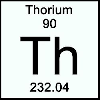
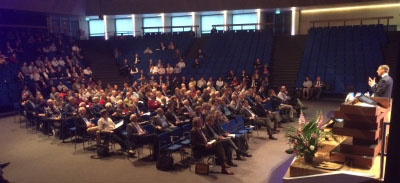
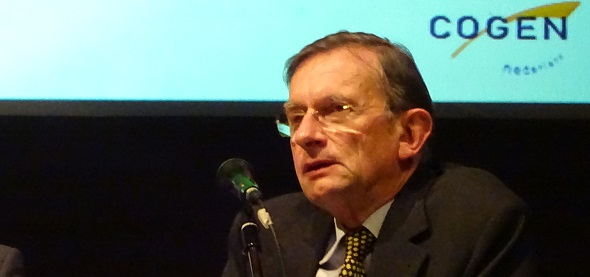

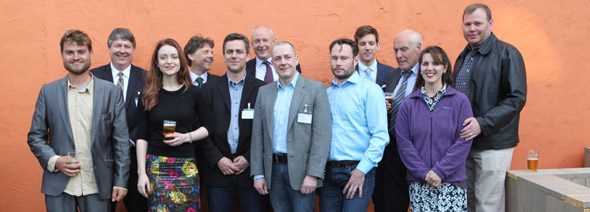
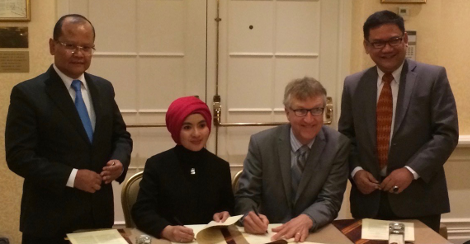






OK als reactie op wat ik eerder afgelopen week schreef is dit een hart onder de riem. Maar een kleintje dan. Want laten we eerlijk zijn, ik lees hier nergens wanneer concreet de eerste Thorium reactor in Nederland wordt gebouwd. Ik lees ook nergens dat de bouw van windmolens wordt gestopt omdat thorium dat zijn rekening gaat nemen.
Ik lees hier alleen maar intenties en vooruitgang. Maar ik lees ook Large scale application was expected to be decades away,
En daar gaat het om. Er is urgentie. En die urgentie is er omdat de groene gekkies onze economie en welvaart aan het vernietigen zijn. Zolang die groene gekkies niet kalt gestellt zijn is onze economie in gevaar en kunnen we niet rustig wachten tot de thoriumreactoren gebouwd kunnen worden en we kunnen gaan genieten van een energie-zorgeloze toekomst.
Beste Twan,
Ik begrijp wat je zegt, en ik kan je vertellen dat achter de schermen ook erg hard aan jouw pijnpunten gewerkt wordt. Daarover later deze maand meer.
Maar in de thorium ontwikkelingen is dit geen zinnige benadering. Het gaat alleen maar zo goed met thorium MSR omdat energie-realisten en klimaat-alarmisten op dit terrein de handen in elkaar slaan. Bijna alle start-ups op ons symposium waren gedreven door duurzame motieven en angst voor klimaatverandering.
Dat leverde heel goede en eerlijke gesprekken op bij de vele diners die we die week gehad hebben, juist omdat iedereen aan dezelfde kant staat en de ander in zijn waarde laat.
Met het fulmineren tegen de duurzaam bevlogenen gooi je dan als thorium MSR beweging je eigen ruiten in.
We proberen dus volledig buiten de eeuwige oude kernenergiediscussie te blijven, en ook het klimaatdebat te bewaren voor persoonlijke gesprekken bij een goed glas wijn. Dat is eigenlijk ook de enige manier om verder te komen!
De eerste (simpele) Nederlandse MSR zou er binnen tien jaar kunnen staan, daar wordt achter de schermen zelfs concreet aan gewerkt.
De enige echte (maar dan ook érg grote) barrière is eigenlijk nog de regelgeving, het in dit verband telkens weer opduikende duiveltje. Dat zal de komende tijd wereldwijd de meeste aandacht vergen.
TOch mooi om te lezen, dit is de weg te gaan.
http://whatis.techtarget.com/definition/disruptive-technology
A disruptive technology is one that displaces an established technology and shakes up the industry or a ground-breaking product that creates a completely new industry.
Here are a few examples of disruptive technologies:
The personal computer (PC) displaced the typewriter and forever changed the way we work and communicate.
The Windows operating system’s combination of affordability and a user-friendly interface was instrumental in the rapid development of the personal computing industry in the 1990s. Personal computing disrupted the television industry, as well as a great number of other activities.
Email transformed the way we communicating, largely displacing letter-writing and disrupting the postal and greeting card industries.
Cell phones made it possible for people to call us anywhere and disrupted the telecom industry.
The laptop computer and mobile computing made a mobile workforce possible and made it possible for people to connect to corporate networks and collaborate from anywhere. In many organizations, laptops replaced desktops.
Smartphones largely replaced cell phones and PDAs and, because of the available apps, also disrupted: pocket cameras, MP3 players, calculators and GPS devices, among many other possibilities. For some mobile users, smartphones often replace laptops. Others prefer a tablet.
Stoomgemaal verving windmolens, gekheid om nu massaal windmolens te plaatsen, is politieke ontaarding/degeneratie.
Ik ben zeker geen specialist, maar het is mij wel overduidelijk dat onze uiteindelijke energie voor een groot deel van generatie IV reactoren zal komen.
Er is waarschijnlijk op lange termijn nog wel olie en gas zat, maar het is niet duidelijk aan welke prijs. En bovendien zijn die 2 grondstoffen beter grotendeels te reserveren als basis voor hun respectievelijke chemie ipv ze domweg te verbranden.
Die generatie IV, waarvan ettelijke designs bestaan, moet zeker geen geval worden van ofwel deze ofwel die, maar van zowel deze als die. Voor wat ik ervan heb gelezen dacht ik dat het eerder de IFR zou worden, zoals gedemonstreerd indertijd in het Argonne Lab … Of afgeleiden daarvan, zoals bv. http://www.transatomicpower.com/ waar o.a. ook Peter Thiel in zit … Maar in elk geval eerder U gebaseerd dan Th gebaseerd … Omdat we zo’n enorme hoeveelheid “afval” daarvan hebben …
Een interessant artikel erover – en hetgeen me nog een beetje meer die richting uitstuurde – is te vinden op euanmearns.com … http://euanmearns.com/molten-salt-fast-reactor-technology-an-overview/ … daaruit begreep ik dat momenteel al voldoende startmateriaal voor U cyclus voorhanden is, terwijl het voor de Th cyclus nog moet aangemaakt worden …
Maar zoals ik al zei, het hoeft niet noodzakelijk of/of te zijn …
En even terzijde, aan alle mensen van goede wil, een voorspoedig nieuw jaar …
Heel fijn dat het de goede kant op gaat met thorium MSR in Nederland. Ik het onverstandig vinden om te doen alsof thorium MSR geen langlevend kernafval oplevert. De boodschap zou moeten zijn dat het afval maar weinig ruimte inneemt en goed te managen is. Dat geldt overigens voor alle (kweek)reactortechnieken, niet alleen voor Thorium MSR. Het overdrijven van de voordelen van Thorium is m.i. niet nodig en zorgt slechts voor problemen in de toekomst. Want ook al is de leugen nog zo snel ….
Je hebt het helaas nog steeds niet goed begrepen. Lees nog eens wat over de LFTR voor je over leugens begint, zou ik zeggen. Ik ga het je niet voor de derde keer uitleggen.
Alle soorten kweekreactoren produceren langlevend nucleair afval. Ook LFTR. Het is niet veel. Het is veel minder dan conventionele reactoren produceren. En het is prima te managen en is in feite een non probleem. Maar ze produceren langlevend afval. Ook LFTR. LFTR is bovendien ook prima bruikbaar voor de productie van (bescheiden hoeveelheden) wapenmateriaal, omdat LFTR werkt met continue brandstof verversing en opschoning. Het is een koud kunstje om de voorzieningen die dat mogelijk maken aan te passen en uit te breiden zodat zuiver U233 beschikbaar gemaakt kan worden. Thorium proponenten negeren of ontkennen dit soort dingen graag en vaak. Dat zijn leugens. Daar krijgen ze vroeg of laat last mee. En daar hebben mensen die op een eerlijke manier kernenergie aanbevelen – dus inclusief de noodzakelijke no-nonsense beschouwing van afval-, radiologische veiligheid- en wapenveiligheidaspecten – uiteindelijk ook last van. Het heeft namelijk geen zin om mensen enthousiast te maken met niet bestaande voordelen. Als puntje bij paaltje komt zullen die mensen merken dat ze voor de domme gehouden werden. En dan slaat hun enthousiasme om in achterdocht en irritatie. En dan zijn we nog verder van huis. Met dank aan de Thorium enthousiastelingen die zich niet aan de feiten willen of kunnen houden.
Je hoeft me niets uit te leggen over dit onderwerp Theo, ik zit er, net als jij, ook al erg lang in.
Ah, de leugens zijn nu opeens verplaatst naar de proliferatieproblematiek. Maar daar had ik het niet over, dus daar loog ik ook niet over.
De reacties in een LFTR produceren uiteraard ook actiniden, maar als je die er niet uithaalt worden ze gewoon weer verbrand. Dus is er voortdurend een constante kleine hoeveelheid actiniden in het vat aanwezig.
Dus de LFTR reactor produceert ze niet: ze komen nl. nooit uit het vat.
En bij sluiten van de reactor na een jaar of dertig stop je de resterende actiniden in de opvolger, waar ze gewoon weer verbrand worden.
Er hoeft dus in het geheel geen langlevend afval opgeborgen te worden. Sterker nog: je kun zoveel langlevend afval als je wilt in de LFTR verbranden.
Waarom voer je dit op als een leugen en als een vermeldenswaardig argument tegen de LFTR? En dat nog onder het mom van het vermijden van achterdocht ook.
Als er iets achterdocht wekt is het dit soort praatjes waarin wij leugenaars genoemd worden.
De productie van langlevend afval is klein, maar niet nul. LFTR onderscheidt zich wat dat betreft niet van andere – reeds bewezen – kweekreactortechnieken.
http://www.the-weinberg-foundation.org/wp-content/uploads/2013/06/Thorium-Fuelled-Molten-Salt-Reactors-Weinberg-Foundation.pdf
Spamfilter blokkeer me. Nog een poging. Deze publicatie weerspreekt je claim dat de thorium MSR geen (!) langlevend afval oplevert.
http://www.the-weinberg-foundation.org/wp-content/uploads/2013/06/Thorium-Fuelled-Molten-Salt-Reactors-Weinberg-Foundation.pdf
Het artikel zegt “This means that LFTRs produce almost no long-term waste”.
Nadat het al uitlegde dat de LFTR zijn eigen langlevende afval weer verbrandt, zoals ik al zei. Er blijft altijd wat in het zout aanwezig, want er wordt voortdurend een deel van de actiniden verband en er komen voortdurend ook weer nieuwe actiniden bij. Het is een evenwicht.
Daarbij kun je dat zout weer hergebruiken, inclusief de actiniden.
Er hoeft dus geen langlevend afval veilig voor 500.000 jaar opgeslagen te worden.
Sterker nog, het langlevende deel van het huidige kernafval is uitstekende brandstof voor MSR centrales.